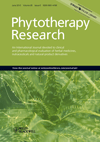A Potential In Vitro and In Vivo anti-HIV Drug Screening System for Chinese Herbal Medicines
Abstract
Chinese herbal medicines are often applied as an alternative therapy for viral diseases. However, the development of anti-HIV herbal drugs has proceeded slowly, partly because of the lack of a high-throughput system for screening these drugs. The present study evaluated 16 herbal medicines for anti-HIV activities in vitro and in vivo. Herbal medicines were first screened for the ability to regulate C-X-C receptor 4 (CXCR4) and C-C receptor 5 (CCR5) promoter activities. A single-round pseudotyped HIV-luciferase reporter virus system (HIV-Luc) was used to identify potential anti-HIV mechanisms. CD4+ T cells from healthy volunteers were examined for changes in CXCR4 and CCR5 levels. HIV-1 replication was evaluated by ELISA. Spica Prunellae and Herba Andrographitis were found to down-regulate the activities of both the CXCR4 and CCR5 promoters. Also, Spica Prunellae and Herba Andrographitis (>1000 µm) inhibited HIV-1 in a dose-dependent manner. CXCR4 and CCR5 levels were reduced in CD4+ T cells from healthy volunteers (p < 0.05). Spica Prunellae and Herba Andrographitis (EC50: 3.18 and 5.49 µg/mL, respectively) could suppress cell fusion and decrease p24 antigen. In conclusion, the data demonstrated that Spica Prunellae and Herba Andrographitis possessed anti-HIV-1 capabilities, perhaps through the inhibition of the CXCR4 and CCR5 promoters and HIV-1 replication. Copyright © 2011 John Wiley & Sons, Ltd.




